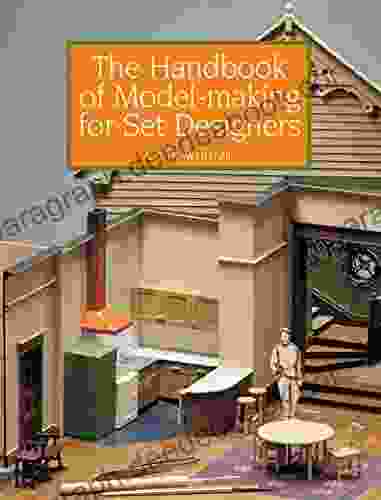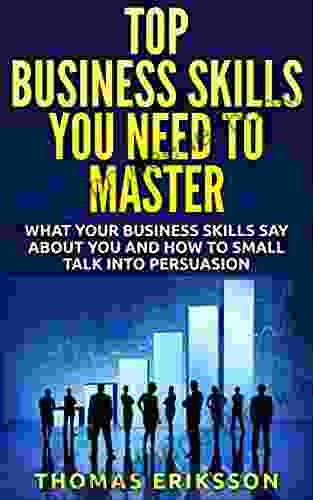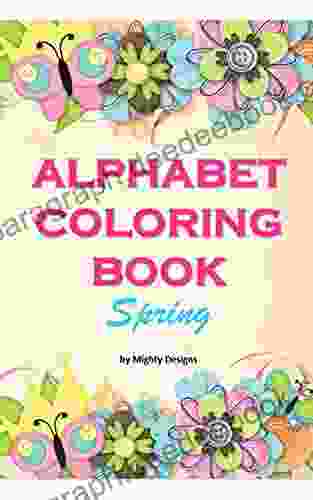The Ultimate Handbook of Model Making for Set Designers

Model making is an essential skill for set designers. It allows them to create scaled-down versions of sets, props, and other elements, which can be used for planning purposes, presentations to clients, or even as part of the final production.
This handbook will provide you with everything you need to know to get started with model making, including:
- The different materials and techniques used in model making
- The design principles that apply to model making
- Best practices for creating realistic and effective models
The first step to model making is to choose the right materials. The most common materials used in model making are:
4.6 out of 5
| Language | : | English |
| File size | : | 86820 KB |
| Text-to-Speech | : | Enabled |
| Screen Reader | : | Supported |
| Enhanced typesetting | : | Enabled |
| Word Wise | : | Enabled |
| Print length | : | 448 pages |
- Wood: Wood is a versatile material that can be used to create a wide variety of models. It is relatively inexpensive and easy to work with, but it can be heavy and bulky.
- Foam core: Foam core is a lightweight and inexpensive material that is easy to cut and shape. It is not as strong as wood, but it is ideal for creating lightweight models that will not be subjected to a lot of stress.
- Styrene: Styrene is a plastic material that is available in a variety of shapes and sizes. It is strong and durable, but it can be difficult to work with.
- Cardboard: Cardboard is a lightweight and inexpensive material that is easy to cut and shape. It is not as strong as wood or styrene, but it is ideal for creating simple models that will not be subjected to a lot of stress.
Once you have chosen the right materials, you need to learn the basic techniques of model making. These techniques include:
- Cutting: Cutting is the most basic technique of model making. You can use a variety of tools to cut materials, including saws, knives, and scissors.
- Shaping: Shaping is the process of giving materials the desired shape. You can use a variety of tools to shape materials, including sanders, files, and rasps.
- Gluing: Gluing is the process of joining materials together. You can use a variety of glues to join materials, including wood glue, white glue, and epoxy.
- Painting: Painting is the process of applying color to materials. You can use a variety of paints to paint materials, including acrylics, oils, and watercolors.
In addition to the basic techniques of model making, you also need to understand the design principles that apply to model making. These principles include:
- Scale: Scale is the ratio of the size of the model to the size of the actual object. It is important to choose the right scale for your model, depending on the purpose of the model.
- Proportion: Proportion is the relationship between the different parts of the model. It is important to make sure that the proportions of your model are accurate, so that the model looks realistic.
- Balance: Balance is the distribution of weight in the model. It is important to make sure that your model is balanced, so that it does not tip over.
- Composition: Composition is the arrangement of the different elements in the model. It is important to create a composition that is visually appealing and that supports the overall design of the model.
In addition to the materials, techniques, and design principles, there are also a number of best practices that you should follow when creating models. These best practices include:
- Use reference materials: When creating a model, it is important to use reference materials to ensure that the model is accurate and realistic. Reference materials can include photographs, drawings, and even the actual object that you are modeling.
- Start with a plan: Before you start creating a model, it is important to have a plan. This plan should include the scale, proportions, and composition of the model.
- Work in stages: It is often helpful to work in stages when creating a model. This will help you to avoid making mistakes and to ensure that the model is well-constructed.
- Take your time: Model making is a time-consuming process. It is important to take your time and to enjoy the process.
Model making is an essential skill for set designers. By following the tips and advice in this handbook, you can learn the materials, techniques, and design principles that you need to create realistic and effective models.
With practice, you will be able to create models that will help you to bring your set designs to life.
4.6 out of 5
| Language | : | English |
| File size | : | 86820 KB |
| Text-to-Speech | : | Enabled |
| Screen Reader | : | Supported |
| Enhanced typesetting | : | Enabled |
| Word Wise | : | Enabled |
| Print length | : | 448 pages |
Do you want to contribute by writing guest posts on this blog?
Please contact us and send us a resume of previous articles that you have written.
 Book
Book Page
Page Story
Story Reader
Reader Newspaper
Newspaper Paragraph
Paragraph Sentence
Sentence Bookmark
Bookmark Shelf
Shelf Bibliography
Bibliography Synopsis
Synopsis Footnote
Footnote Scroll
Scroll Codex
Codex Bestseller
Bestseller Classics
Classics Narrative
Narrative Autobiography
Autobiography Reference
Reference Dictionary
Dictionary Narrator
Narrator Character
Character Resolution
Resolution Librarian
Librarian Catalog
Catalog Card Catalog
Card Catalog Borrowing
Borrowing Stacks
Stacks Archives
Archives Periodicals
Periodicals Research
Research Lending
Lending Reserve
Reserve Journals
Journals Reading Room
Reading Room Rare Books
Rare Books Literacy
Literacy Study Group
Study Group Awards
Awards Theory
Theory Nina Walker
Nina Walker Colin Winslow
Colin Winslow Mark Aldrich
Mark Aldrich Monique Truong
Monique Truong Ellen Koskoff
Ellen Koskoff Robert W Fuller
Robert W Fuller Dandi Palmer
Dandi Palmer Guillermo Del Toro
Guillermo Del Toro Diana Gabaldon
Diana Gabaldon Johnny Marr
Johnny Marr Leah Marie Brown
Leah Marie Brown Murphy Wallace
Murphy Wallace Michael Billington
Michael Billington Barbara Maat
Barbara Maat Dorothy Eden
Dorothy Eden Randy Aldcroft
Randy Aldcroft Dane Calloway
Dane Calloway Cecelia Sandberg
Cecelia Sandberg Siew Yen Ho
Siew Yen Ho Noah Child
Noah Child
Light bulbAdvertise smarter! Our strategic ad space ensures maximum exposure. Reserve your spot today!

 Harold PowellPerfect for Catch-Up and Learning at Home: Educational Apps that Cater to...
Harold PowellPerfect for Catch-Up and Learning at Home: Educational Apps that Cater to... Aron CoxFollow ·8.5k
Aron CoxFollow ·8.5k Michael CrichtonFollow ·19.5k
Michael CrichtonFollow ·19.5k Boris PasternakFollow ·5.1k
Boris PasternakFollow ·5.1k Branden SimmonsFollow ·2.2k
Branden SimmonsFollow ·2.2k Hugo CoxFollow ·17.7k
Hugo CoxFollow ·17.7k Earl WilliamsFollow ·4.4k
Earl WilliamsFollow ·4.4k Darrell PowellFollow ·9k
Darrell PowellFollow ·9k Rex HayesFollow ·18.1k
Rex HayesFollow ·18.1k

 Ricky Bell
Ricky BellThe Marriage: An Absolutely Jaw-Dropping Psychological...
In the realm of...

 Ray Blair
Ray BlairDiscover the Enchanting Charm of Budapest and Its...
Nestled in the heart of...

 Tyrone Powell
Tyrone PowellHuddle: How Women Unlock Their Collective Power
Huddle is a global movement that empowers...

 Grayson Bell
Grayson BellThe Coin Story of the Holocaust: A Symbol of Hope and...
In the depths of the...

 Virginia Woolf
Virginia WoolfFolklore Performance and Identity in Cuzco, Peru: A...
Nestled amidst...

 Dylan Mitchell
Dylan MitchellThe Enduring Love Story of Héloïse and Abélard: A Tale of...
An Intellectual Passion In the heart of...
4.6 out of 5
| Language | : | English |
| File size | : | 86820 KB |
| Text-to-Speech | : | Enabled |
| Screen Reader | : | Supported |
| Enhanced typesetting | : | Enabled |
| Word Wise | : | Enabled |
| Print length | : | 448 pages |










